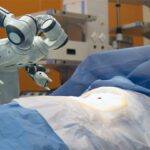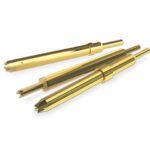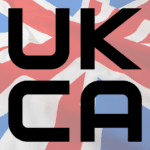Miniaturized and User-Friendly Connectors Empower Advanced Medical Wearables
New medical wearable device innovations count on miniaturized connectors that can perform reliability under the stresses of use and cleaning processes.
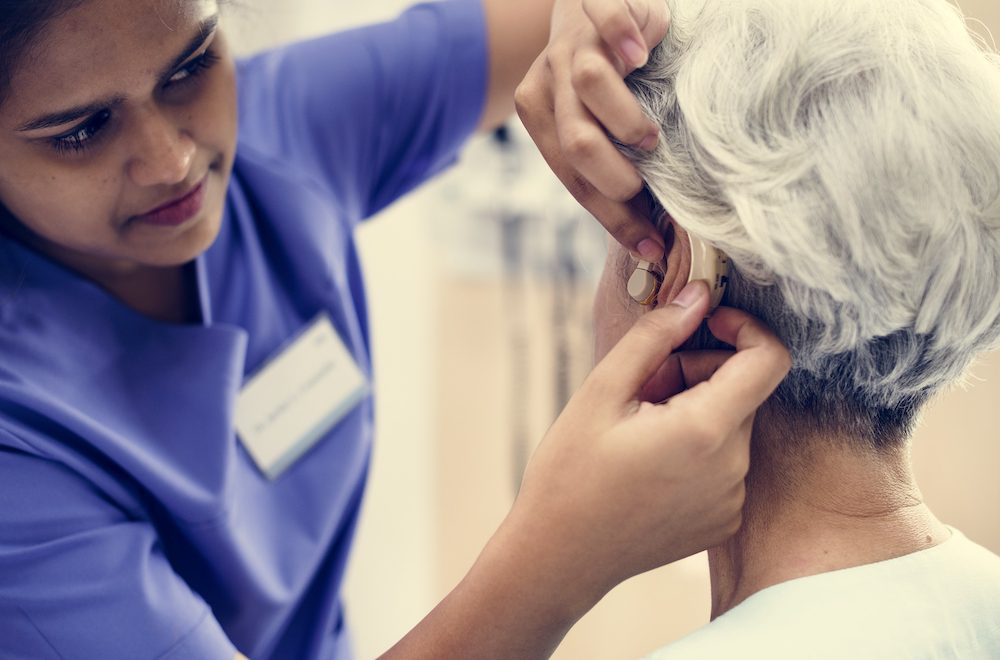
An elderly woman with hearing aid
Miniaturized Connectors
In today’s fast-growing medical wearable markets, designers must create safe devices that provide effective performance in astoundingly small form factors. Ultra-miniaturized interconnect solutions support these products’ power and signal requirements. However, the selection or development of connectors for wearables depends on unique parameters that apply to specific applications. The medical industry serves a broad spectrum of markets, each with its own electrical, mechanical, environmental, safety, and regulatory considerations.
Wearable medical devices prioritize user safety and comfort, making miniature, rugged, IP sealed, high performance connectors the right choice. Meanwhile, the devices and mechanisms that charge these products may have different needs. Miniaturization and reliability are key for both sides of the equation.
Spring-Loaded Probes are Ideal for Wearable Docking and Charging Stations
Connector solutions for hearing aids and other audiology devices must be small and lightweight, but also durable and easy to use. These criteria are met with spring-loaded probes, otherwise known as spring-loaded contacts or spring probes. Many variations on this concept exist, and they are commonly used for docking and charging applications.

Mill-Max’s Low-Profile Target Discs (left), Omniball spring-loaded contacts (center), and Miniature Receptacles (right), are well-suited for wearable applications with space constraints.
Mill-Max Low-Profile Target Discs expand its spring-loaded pin mating options with four new series of contact discs offering additional diameter and height options. These low-profile SMT disc-shaped terminals serve wearable applications with limited vertical space. The company’s new Omniball spring-loaded contacts with solder tail and solder cup options accommodate different termination requirements. Omniball’s spring-loaded contact features a rolling ball interface, enabling mating components to engage in lateral, rotational, and angular alignments while providing optimal electrical, mechanical, and structural reliability.

In contrast to common spring probes, FIXTEST Helix Pin (FHP) features an open housing design that eliminates cavities that can be challenging to reach in cleaning and sterilization processes.
FIXTEST Pruefmittelbau GmbH designs spring-loaded probes and other precision contacts for medical applications and testing electrical components in-circuit test fixtures. Jörg Riehle, CEO of FIXTEST, said, “Our spring probes are small, lightweight, easy to use, and have evolved to support battery charging, which is ideal for wearable hearing aids and charging stations.”
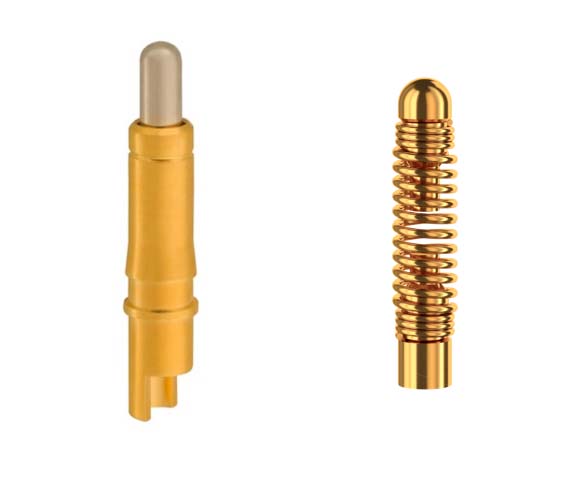
FIXTEST FK-762 (left) contains a PTFE seal that prevents fluid ingress during cleaning, disinfection, or autoclaving. FIXTEST’s vibration-resistant battery charging probe ensures (right) reliable contact in emergency medical vehicles, helicopter transport, and other high-vibration environments.

Precision pogo pins by Interconnect Systems International (ISI), available from Arrow Electronics, come in a variety of lengths, diameters, and 10 plunger types.
Interconnect Systems International (ISI), a Molex company, designs and manufactures some of the world’s smallest pogo pins. These are used in medical, Test & Measurement, mil/aero, and other high-reliability applications.
Miniaturized Magnetic Connectors Simplify the Wearable Charging Experience
Wearable electronics need a small-scale charging apparatus that its appropriately sized for the device and can be easily stored after use.

Rosenberger MultiMag Series connectors are designed for compact applications. MultiMag 6 is used for USB applications and MultiMag 15 for general power and data transmission.
Rosenberger’s innovative magnetic self-mating connectors automatically discover their mating connections. Their break-away function is designed to immediately disconnect if cable experiences an acute tensile force pull. This mechanism avoids risks to the user, device, or connector.
Body-Worn Wearables Benefit from Low-Profile, Blind-Mate, Non-Magnetic Connectors
Magnetic connections also serve users in body-worn applications, where a sudden disruption, such as catching a cord on something, could jar or injure the user who is connected to the device.
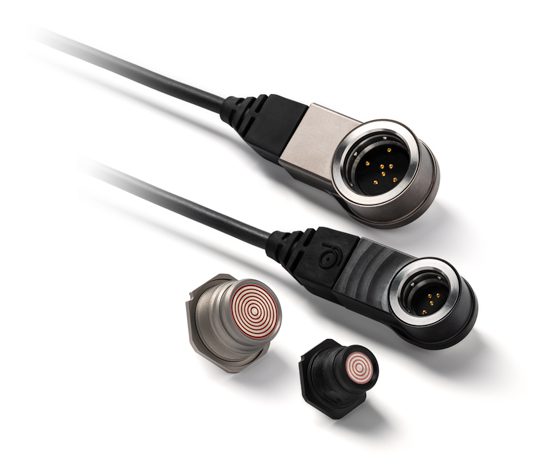
Fischer Connector’s LP360 Series Connectors feature seven signal and power contacts with a cabled receptacle and panel plug, and new active devices, including USB 2.0 adaptor, LED, and rugged flash drive.
Fischer Connector’s new LP360 Series connectors have no key code, providing 360° mating freedom for optimized cable management. The blind-mate, non-magnetic quick-release mating system is ideal for medical wearables, defibrillation vests, and other clothing used by first responders and military personnel.
The Evolution of USB Enables Remote Patient Monitoring and Other Wearables
Advances in 5G wireless technology, coupled with the new USB4 connectors, will further enable the development of new miniature and user-friendly interfaces. These interfaces give patients greater mobility through wearables that can provide remote patient monitoring. The latest and smallest USB or HDMI interconnect solutions, which are widely used for consumer electronics, are now coming to medical wearables in durable new designs.
USB (Universal Serial Bus) is an industry standard to define standard interfaces between computers and peripherals. It was developed by the USB Implementers Forum (USB-IF) with leading tech companies and connector suppliers. The USB4 Cable and Connector Specification, released in August 2019, increases the data transfer rate to 40 Gb/s — up to eight times faster than USB 3.0 and more than double the USB 3.2 standard — and delivers secure 100-W USB-C charging.
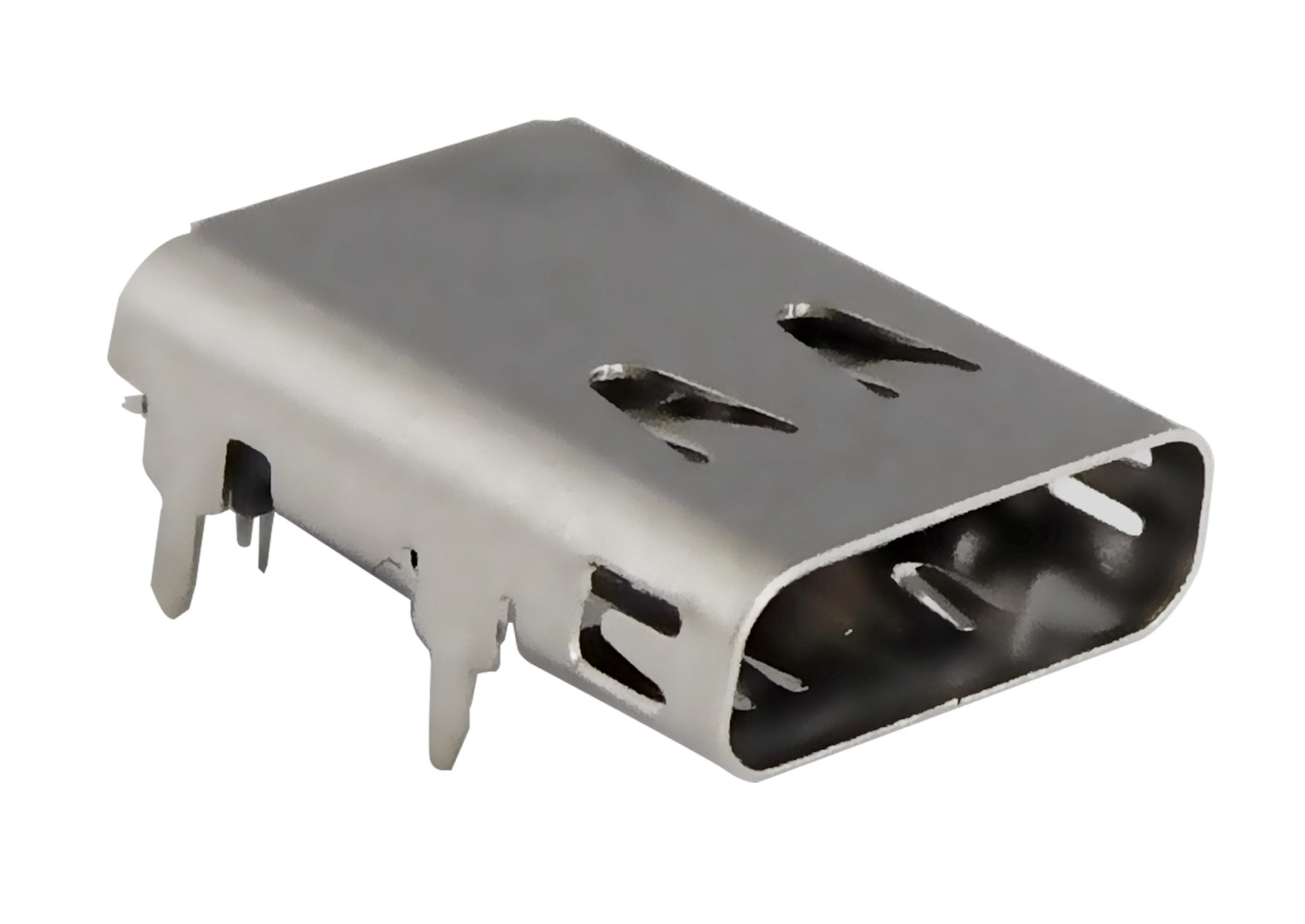
Stewart Connector offers robust USB connectors that enable high-frequency mating, can handle operating temperatures of -40ºC to 105ºC, data transmission rates up to 10 Gb/s, and have a current carrying capacity of 5.0 A.
Stewart Connectors, a Bel Group company, has designed its USB Type-C connectors with a very compact footprint that saves space on the PCB. The reversible mating interface of the USB Type-C connector ensures easy and reliable mating of the plug to jack in any plug direction. These reversible connectors enable high-frequency mating, allowing for data transmission rates up to 10 Gb/s and a current carrying capacity of 5.0 A.
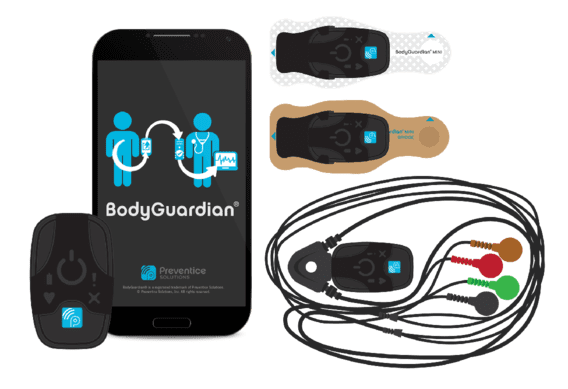
The BodyGuardian Mini and Mini Plus are wireless, waterproof, wearable heart monitoring devices consisting of a small electrode sensor, a mini heart monitor that snaps onto the electrode, and a 1-, 2-, or 4-wire lead set, which connects the system using a micro-USB connector, with a wireless app designed to capture recordings of the heart via cell, tablet, PC, or other peripheral device.
Conductive Smart Garments Provide Comfortable Mobility for Wearables
The proliferation of miniaturized connectors and sensors that can monitor biometrics and transmit data to medical teams is spurring the development of a wide array of new wearable technologies. Precise and stable high pin count connections to the transmitter and power supply are critical to these wearables.
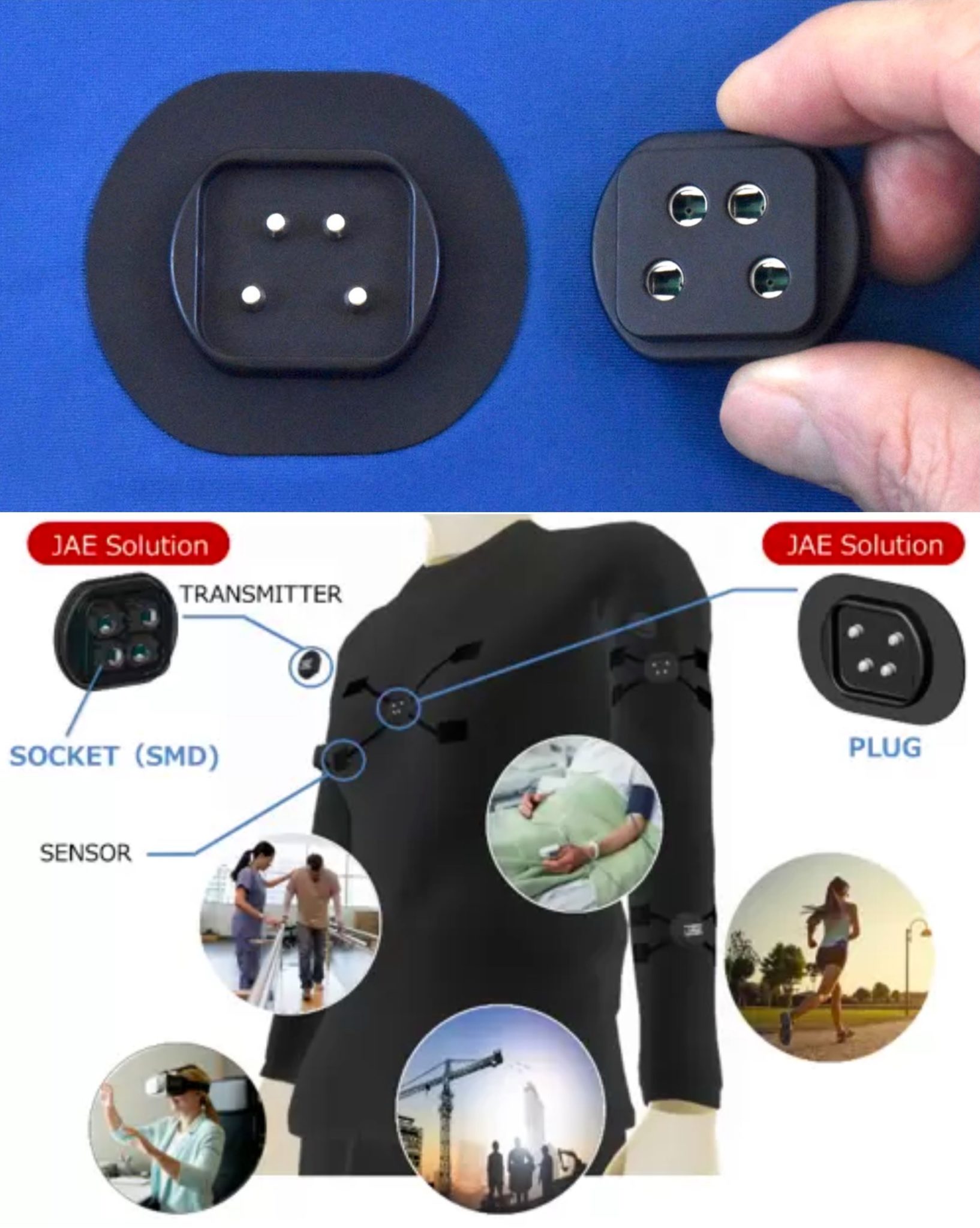
JAE’s RK01 Smart Textile Connector is designed for flexible medical, home monitoring, and sports devices, including smart clothing that can collect motion and biological data, and transmit information to medical providers.
The e-vive conductive garment from CyMedica has built-in sensor technology that transmits range of motion data while precisely positioning the electrodes on the quadriceps for effective muscle activation. This noninvasive therapeutic system delivers pain relief, while remotely sharing patient progress data with healthcare providers through a secure online portal.
Even though conductive smart garments are a potential disruptor to electrical connectors, they will continue to evolve and create value for wearables.
Like this article? Check out our other wearables articles, our Medical Market Page, and our 2021 Article Archives.
Subscribe to our weekly e-newsletters, follow us on LinkedIn, Twitter, and Facebook, and check out our eBook archives for more applicable, expert-informed connectivity content.
